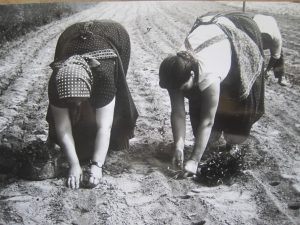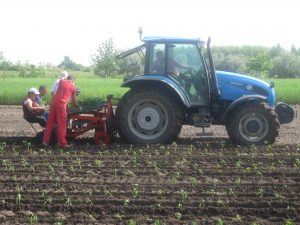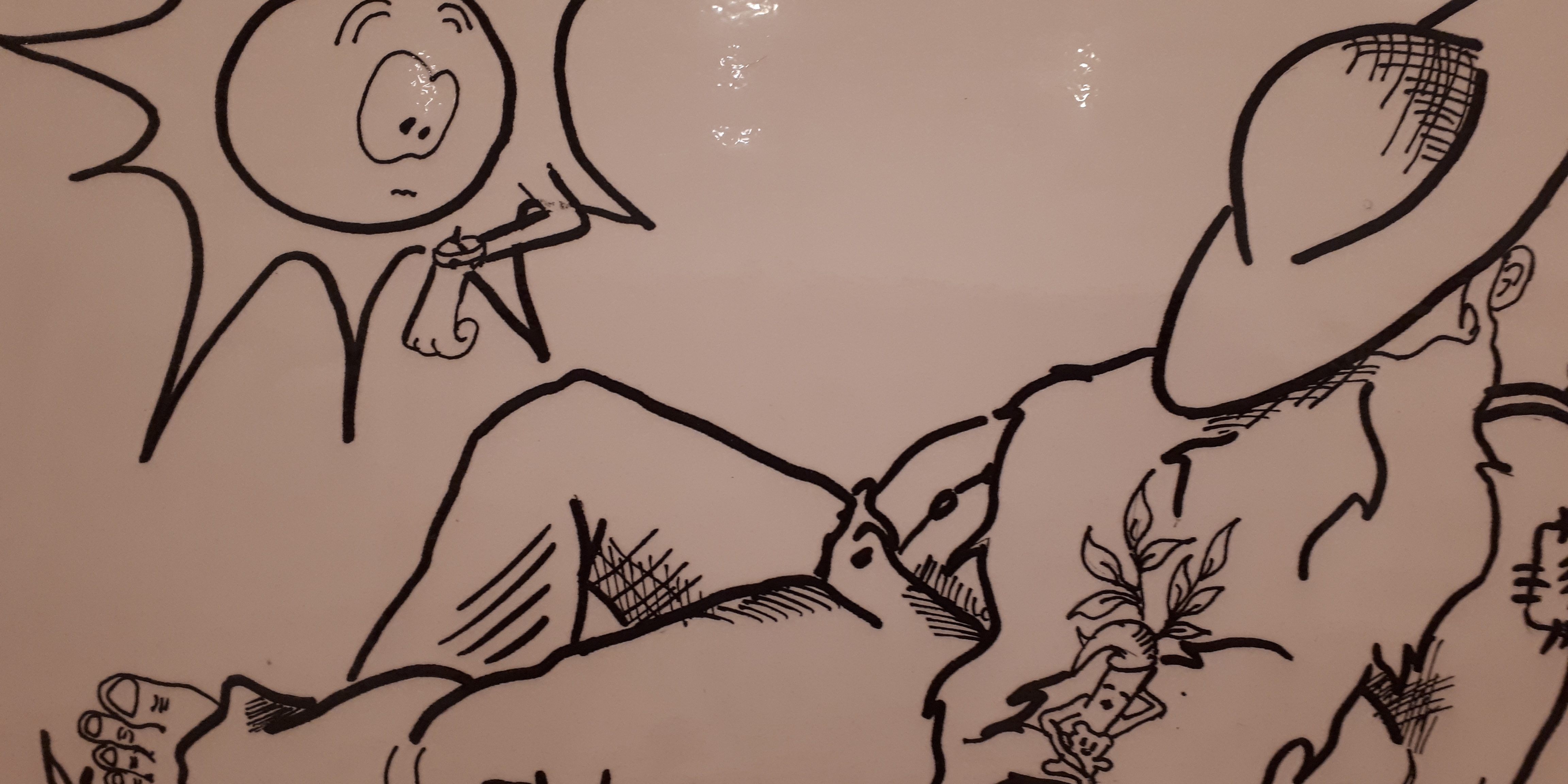It is paprika planting time and we very much hope the Ice Saints next week will come unnoticed! The days of the Ice Saints Pancras, Servatius and Boniface on the 12th, 13th and 14th of May are yet to come and although these past few days have been rather cold and threatened with night frost, we now hope summer is nearing. So we’d better start preparing for transplanting our paprika seedlings. The rule of the day is no after lunch nap on planting day!
Paprika seedlings and in fact any seedlings that are sensitive to cold weather and frost may be transplanted into the open field only when night frosts are gone and warm weather sets in. The frost kills the plant but cold weather makes it ill and prone to diseases, bacteria and sets back growing cycle. So, once the farmer sets his mind to remove the seedling from the hotbed, then the work must be done with no delay. No rest, no after lunch nap is allowed.
These days the paprika seedlings spend about 8 weeks in a nursery or hotbed. Nurseries in the past were large wooden structures with glass on top. Today, it is a foil tunnel, where between mid-March and mid-May paprika seeds germinate and grow into seedlings. The plants are ready to be transplanted when they have 6 to 8 leaves and bushy roots, about 18 cm long and the stakes are strong. Compared to the cheaper and quicker direct sowing method, this method eventually rewards the farmer with earlier harvest, therefore many farmers choose planting instead of direct sowing to better secure good yield.
This year farmers are transplanting the seedlings into the open fields over a period of two weeks. Between 15 and 20 May they’ll be transplanting plants grown in soil-block, between 20 and 30 May they’ll be transplanting the seedlings from the nursery beds. It has taken almost 2 months and a daily two hours of nursery care to grow the seedlings. When planting, the distance between the lines is 50-60 cm and the distance between the plants is 20-25 cm, which means you can plant about 80 thousand plants in one hectare.
Planting in the past was especially arduous work, no one could rest before all the seedlings were transplanted, as once taken out of the sowbed, the plant must be transplanted in the shortest possible time. As it was said then: „Like a corpse, the plant must be removed from the bed.” The first planting machines began to be used in Hungary only in 1969. Prior to that it was all done by hand, probably this was the hardest paprika-related work: the planter would bend down for long hours and many days. I think it must have been harder than hand-picking.

Planting by hand
A few beliefs and sayings related to planting endures: If the planter stops for a rest, the dibber (with which you dig a whole into the ground for the little plant) must not be stuck into the soil, only laid on top of it, otherwise maggots will attack the plant! The planter must not sleep after lunch, the plant will go to sleep too, that is, it will not set fruit!

Planting at PaprikaMolnár Ltd, couple of years ago
Tetszett a cikk? Ha szeretne még paprikás és fűszeres témában, heti rendszerességgel cikket olvasni, hírt kapni az ÚJ paprika elkészültéről, iratkozzon fel hírlevelünkre. Subscribe to our Blog and enjoy our Paprika Poster.







